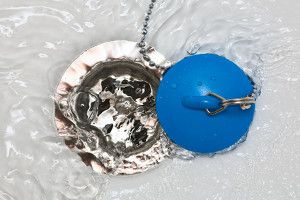FRENCH DRAINS HELP HOMEOWNERS AVOID COSTLY REPAIRS

It may not be until a flash flood hits your area that you realize your home has problems with water drainage. Areas of the yard or basements are those commonly in trouble during flooding.
Few lawns are landscaped with proper drainage flow when built, especially in areas where floods are not common. And over time, weather patterns can change whereas at one point the same home may be susceptible to flooding when it never had been before.
Water that accumulates on your property isn’t that much of a problem until it accumulates in areas where it shouldn’t, like along your home’s foundation areas. Not only can it cause foundation problems if you never do anything about it, but it can also infiltrate the walls of the home, especially if there is a basement.
One solution to this issue is the French Drain system. French drains can be installed just about anywhere you need them. They are most common in the basement and near foundations, but can be installed anywhere you don’t want water to accumulate.
The name, French Drain, wasn’t derived from the name of the French people. It originated as a name after the judge and farmer in Concord, Massachusetts, Henry French, who promoted the idea of the French Drain system in an 1859 book about farm drainage.
Water flows downhill and takes the easiest route it can find. The French Drain utilizes this factor to its advantage by creating a sloped trench that will route the standing water away from the area.
The French Drain is a linear hole filled with gravel and a pipe system that takes the water and moves it down the line.
The pipes are normally perforated at the bottom and are laid along the trench. The trench bottom is sloped about one inch for every 8 feet and laid in the direction you want the water to flow. You can divert water anywhere with a french drain, as long as you have ensured it is traveling downhill.
Sometimes the flooded area isn’t that noticeable and may only represent itself as a soggy area. Unless we step in these area, it can be difficult to spot a problem. So it’s a good idea to especially examine around the foundation of your home after a good rain to ensure the landscape of your property is routing water flow elsewhere.
French Drains don’t have to be put in deep trenches. Commonly, the trench has a depth of about 2 feet and is about 1.5 feet wide.
When laying the pipe, you’ll want to be sure that when passing through ground areas with shrubs or tree roots, you switch to a solid pipe and not perforated or else roots can grow into the pipe and clog it up or crack it.
Basements are prime problem areas when it comes to water damage. French Drains are easy to install during construction, and can be easy to quite complicated to install in a basement area.
You may be faced with needing to drill into the foundation or there may be a need to remove walkways, decks, landscaping in order to install it. This can significantly add to the cost, but is a necessary improvement that will keep your home dry.
